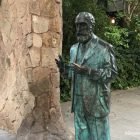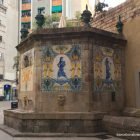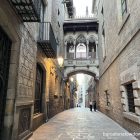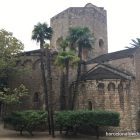If it wasn’t for the fact that it stands alone beside a busy highway on the outskirts of Barcelona, there would be little to differentiate the Gothic arch of Sant Adrià de Besòs from a myriad of other medieval church doorways.
What makes this particular doorway unusual is it’s interesting history which includes bullfights, riots and early morning pistol duels. Not to mention the fact that the nomadic doorway is currently in it’s third location since it was originally built more than 700 years ago.
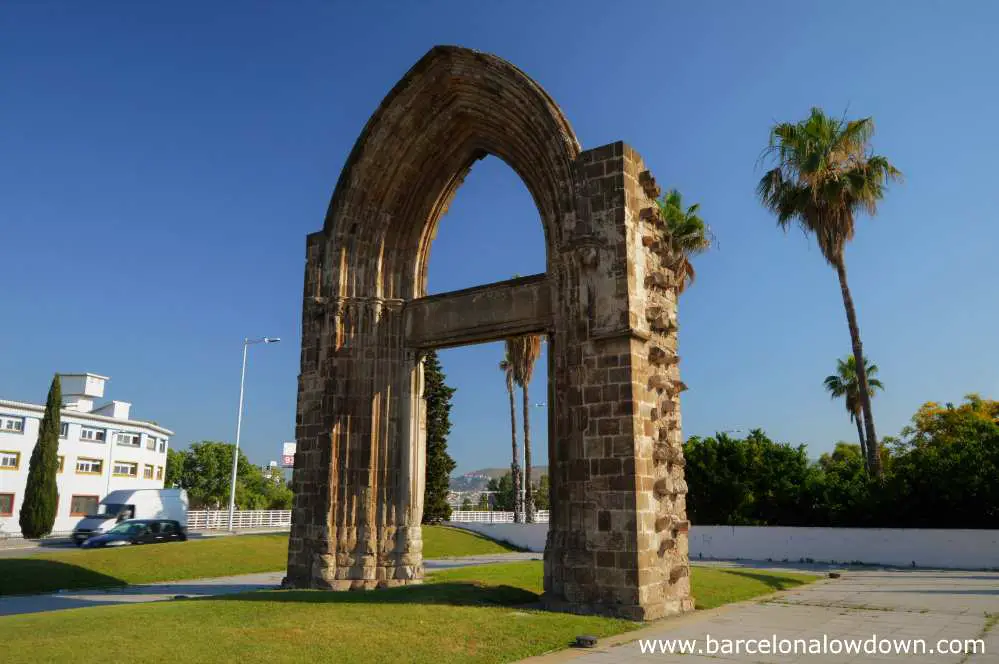
History of the Gothic arch of Sant Adrià de Besòs
The Gothic arch is all that remains of the Convent del Carme convent which was built between 1291 and 1292.
The Convent was located in the parish of Santa Maria del Pi in Barcelona’s El Raval neighbourhood near to the La Boqueria market. The building was extended during the 14th century when two cloisters were added.
On the 25th of July 1835 the Convent del Carme was one of several churches that fell foul of angry mobs.
After a particularly disappointing bullfight in El Torin (bullring in the Barceloneta neighbourhood which was torn down in 1944) angry spectators began rioting, dragging the decapitated remains of one of the bulls around the city and setting fire to churches.
A popular poem from the time recounts the night’s events;
The night of St. James of the year 1835.
There was a big riot in the Torin.
Six bulls took part, all of them were bad.
That was the reason for burning the convents.
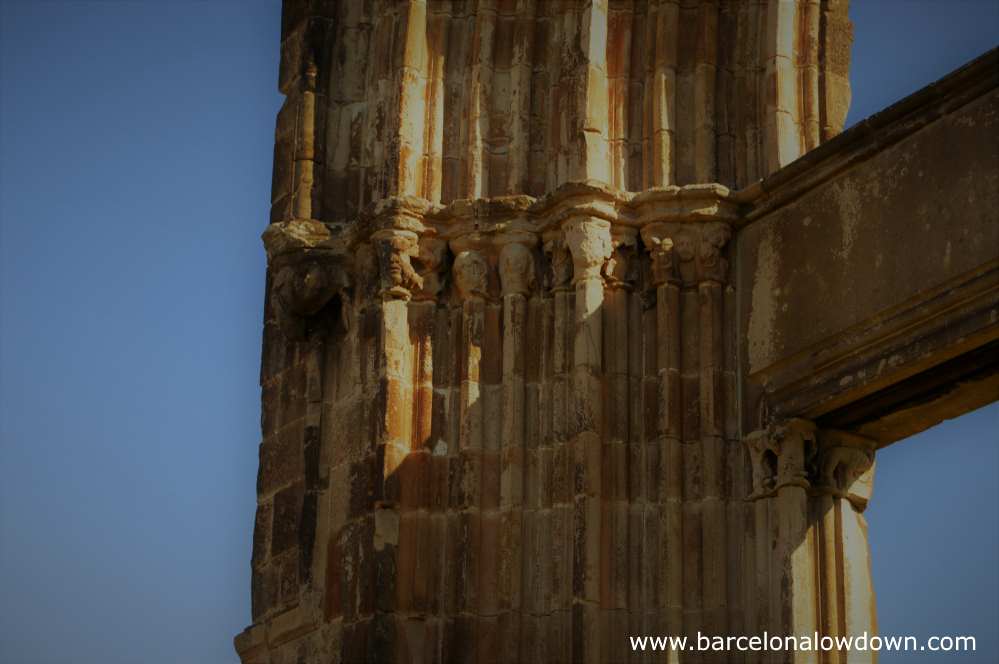
In 1838 the convent was purchased by the city council to house the University of Barcelona.
In 1874, after the university moved to it’s current location, the convent was torn down and most of the masonry was used as building materials to construct the houses which now stand on the site.
Statues and other decorative features, including the main entrance to the church, were sold to private collectors. Some of the statues are now housed in the MNAC art museum.
In 1876 the church’s main door and other artefacts were sold to Sr. Juli Parellada to be used to build a church on the banks of the River Besòs. Apparently to celebrate the fact that he had escaped unscathed from a pistol duel next to the river.
Unfortunately Sr. Parellada died shortly afterwards and the church was never completed. The reconstructed doorway stood abandoned in a field on the outskirts of Barcelona until the 1990s.
Finally the Gothic arch was moved to it’s current location in 1991 when the Ronda Litoral ring road was built.
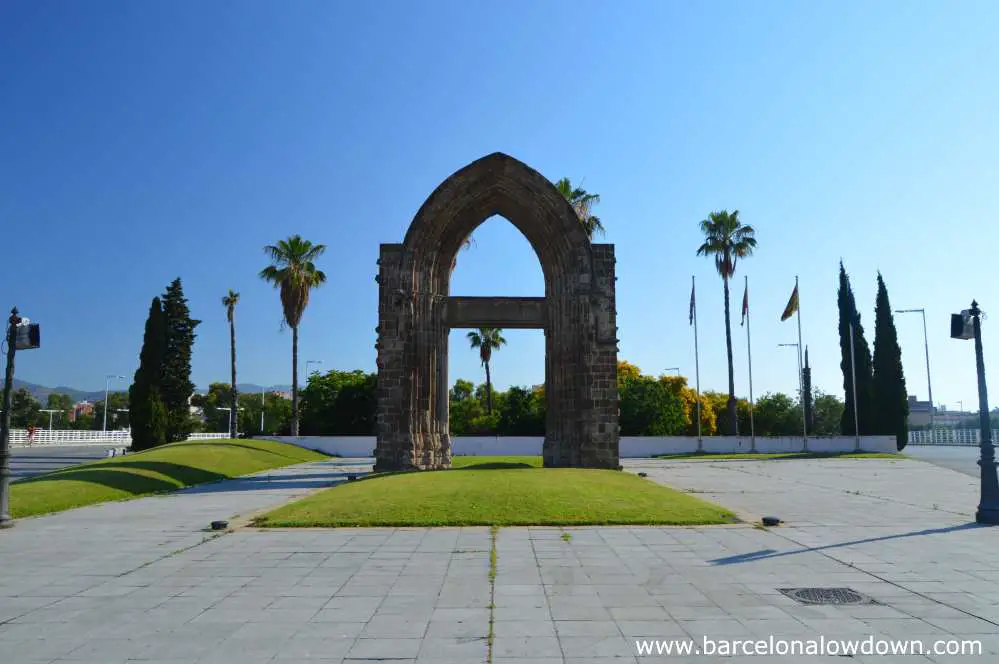
Location
Avenida de Pi i Margall s/n
How to get there
The doorway is near to the Verneda metro stop on the L2 (purple line).
As you leave the metro station turn right and walk East along Carrer de Balmes 2 blocks. The arch is located in a small park surrounded by Avinguda de Pi i Margall and the Ronda Litoral ring road.
Other attractions nearby:
- Museu d’história de la immigració (the history of immigration museum)
- Statue of Camerón de la Isla
- Monument to Francesc Macià
- El Parc Fluvial de Besos
- Panorama
Map
Av. de Pi i Margall

